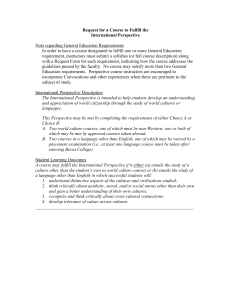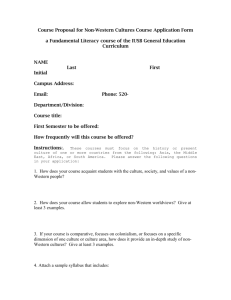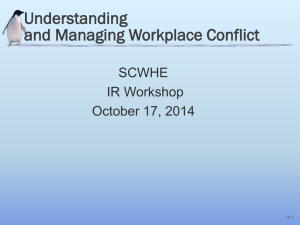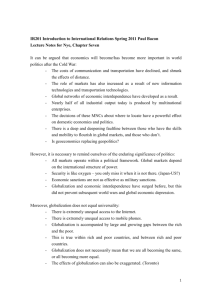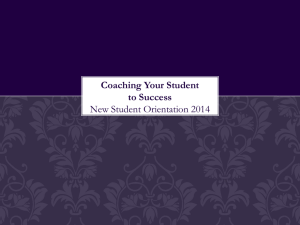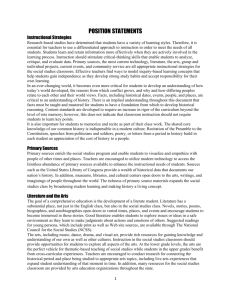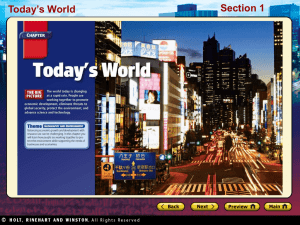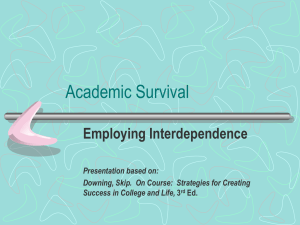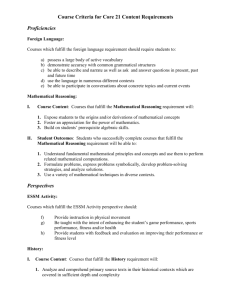Proposal for change in Global Perspectives by Core Curriculum
advertisement
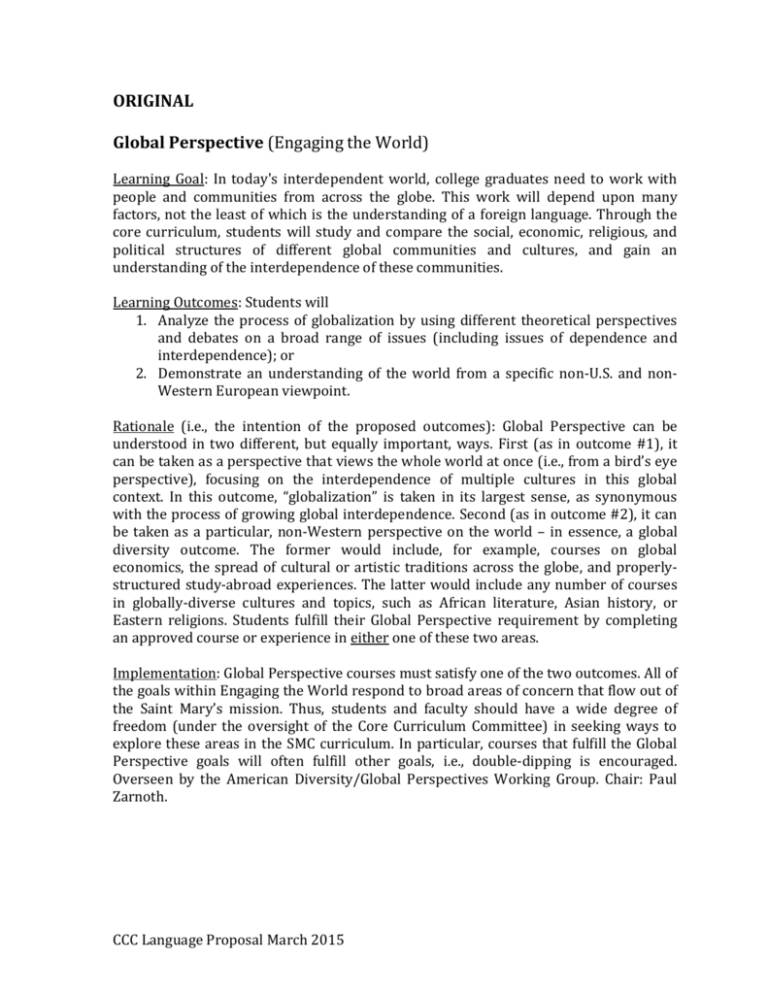
ORIGINAL Global Perspective (Engaging the World) Learning Goal: In today's interdependent world, college graduates need to work with people and communities from across the globe. This work will depend upon many factors, not the least of which is the understanding of a foreign language. Through the core curriculum, students will study and compare the social, economic, religious, and political structures of different global communities and cultures, and gain an understanding of the interdependence of these communities. Learning Outcomes: Students will 1. Analyze the process of globalization by using different theoretical perspectives and debates on a broad range of issues (including issues of dependence and interdependence); or 2. Demonstrate an understanding of the world from a specific non-U.S. and nonWestern European viewpoint. Rationale (i.e., the intention of the proposed outcomes): Global Perspective can be understood in two different, but equally important, ways. First (as in outcome #1), it can be taken as a perspective that views the whole world at once (i.e., from a bird’s eye perspective), focusing on the interdependence of multiple cultures in this global context. In this outcome, “globalization” is taken in its largest sense, as synonymous with the process of growing global interdependence. Second (as in outcome #2), it can be taken as a particular, non-Western perspective on the world – in essence, a global diversity outcome. The former would include, for example, courses on global economics, the spread of cultural or artistic traditions across the globe, and properlystructured study-abroad experiences. The latter would include any number of courses in globally-diverse cultures and topics, such as African literature, Asian history, or Eastern religions. Students fulfill their Global Perspective requirement by completing an approved course or experience in either one of these two areas. Implementation: Global Perspective courses must satisfy one of the two outcomes. All of the goals within Engaging the World respond to broad areas of concern that flow out of the Saint Mary’s mission. Thus, students and faculty should have a wide degree of freedom (under the oversight of the Core Curriculum Committee) in seeking ways to explore these areas in the SMC curriculum. In particular, courses that fulfill the Global Perspective goals will often fulfill other goals, i.e., double-dipping is encouraged. Overseen by the American Diversity/Global Perspectives Working Group. Chair: Paul Zarnoth. CCC Language Proposal March 2015 Global Perspectives (proposal) Learning Goal: (No change) Learning Outcomes: Students will 1a. Analyze the process of globalization by using different theoretical perspectives and debates on a broad range of issues (including issues of dependence and interdependence); or 1b. Demonstrate an understanding of the world from a specific non-U.S. and nonWestern European viewpoint. Students will also 2a. Demonstrate the ability to use a second language for authentic communicative purposes; and 2b. Demonstrate an understanding of the cultural artifacts and practices embodied by the language studied. Rationale (i.e., the intention of the proposed outcomes): A Global Perspective can be understood in two different, but equally important, ways. First (as in outcome #1a), it can be taken as a perspective that views the whole world at once (i.e., from a bird s eye perspective), focusing on the interdependence of multiple cultures in this global context. In this outcome, globalization is taken in its largest sense, as synonymous with the process of growing global interdependence. Second (as in outcome #1b #2), it can be taken as a particular, non-Western perspective on the world in essence, a global diversity outcome. The former would include, for example, courses on global economics, the spread of cultural or artistic traditions across the globe, and properlystructured study-abroad experiences. The latter would include any number of courses in globally-diverse cultures and topics, such as African literature, Asian history, or Eastern religions. Students fulfill their Global Perspective requirement by completing an approved course or experience in either one of these two areas. Studying a second language, whether modern or classical, helps us recognize universal aspects of the human condition and embrace the diverse backgrounds of people at home and around the world. By Outcomes #2a we mean that students will reach an intermediate level of proficiency with a second language, a communicative competency in the modes the language is used in the contemporary world, understanding that exactly what this entails will vary by language. But language is not just skill. Specific language artifacts (the use or not of pronouns, the types of tenses allowed, how honorifics are used) reflect the culture in which that language lives or lived. Second language acquisition therefore makes students conscious of the ways in which language shapes our world and our perceptions of it, on both a personal and collective level. This is reflected in Outcome #2b. CCC Language Proposal March 2015 Implementation: Students must complete one course satisfying either Outcome #1a or 1b. Students must also demonstrate intermediate level proficiency in a modern or classical language in any of the ways indicated by the Catalog of Courses. Implementation: Global Perspective courses must satisfy one of the two outcomes. All of the goals within Engaging the World respond to broad areas of concern that flow out of the Saint Mary’s mission. Thus, students and faculty should have a wide degree of freedom (under the oversight of the Core Curriculum Committee) in seeking ways to explore these areas in the SMC curriculum. In particular, courses that fulfill the Global Perspective goals will often fulfill other goals, i.e., double-dipping is encouraged. Overseen by the American Diversity/Global Perspectives Working Group. Chair: Paul Zarnoth. CCC Language Proposal March 2015
